Discover the allure of Muji style living room design, where minimalism meets elegance. This style, originating from Japan, emphasizes clean lines, natural materials, and a calming, neutral color palette. It’s perfect for those seeking a serene and uncluttered living space. In this exploration of Muji style living rooms, we’ll delve into key aspects that make this design so appealing and timeless. From furniture choices to color schemes, every element works in harmony to create a peaceful, inviting environment.
Natural Light in Muji Style Living Rooms




Natural light plays a crucial role in enhancing the aesthetics of a Muji style living room. This Japanese design philosophy, known for its minimalist approach, emphasizes the importance of simplicity, functionality, and natural elements. The abundance of natural light not only elevates the visual appeal of the living space but also contributes to the psychological well-being of the inhabitants.
In the realm of interior design, natural light is considered a precious commodity. It has the power to transform a space, making it appear larger, more open, and more inviting. In a Muji style living room, where the focus is on minimalism and serenity, natural light becomes an essential component. It highlights the clean lines and the uncluttered spaces that are characteristic of this design style.
Beyond aesthetics, natural light significantly impacts our mood and health. Exposure to natural light increases serotonin levels, enhancing our mood and energy levels. This is particularly important in a living room, a space where we relax, entertain, and spend quality time with family. In a Muji style living room, where the design is intended to create a peaceful and calming atmosphere, maximizing natural light can further enhance these psychological benefits.


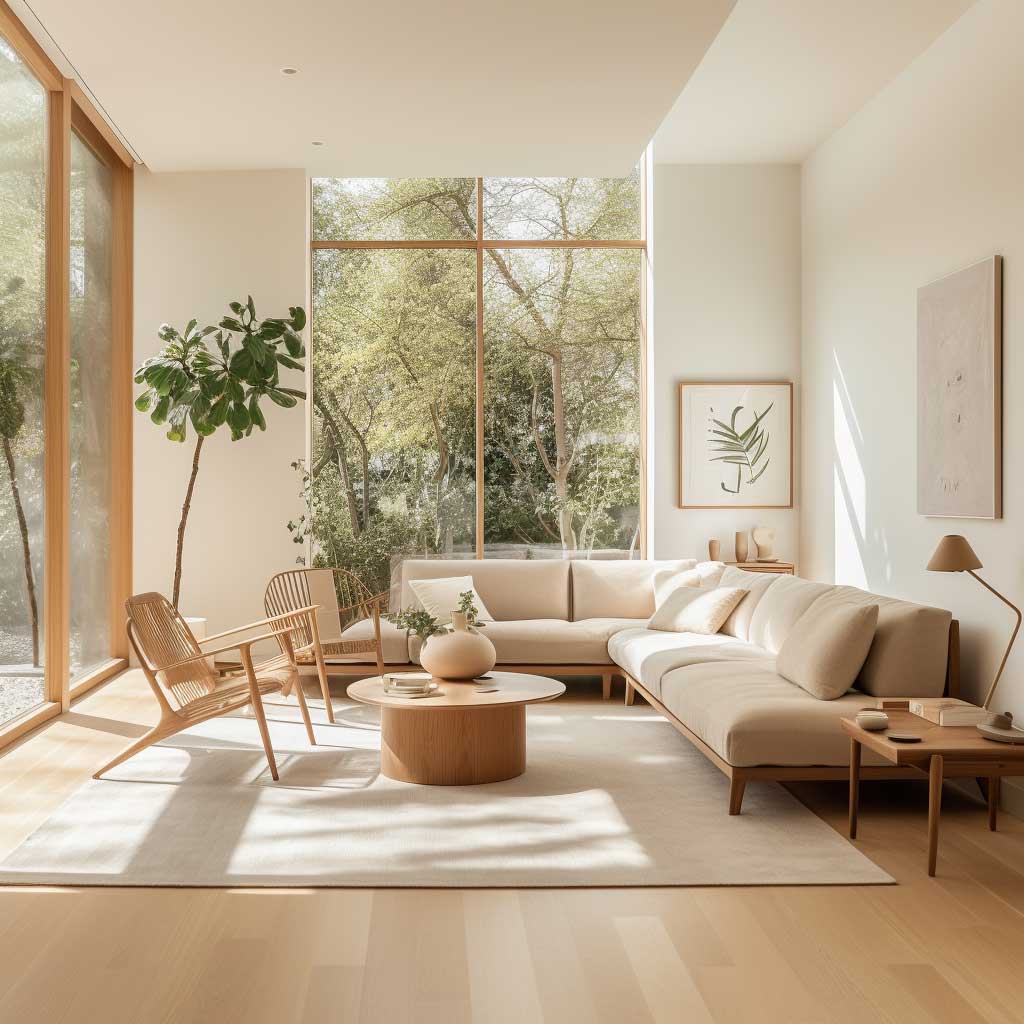
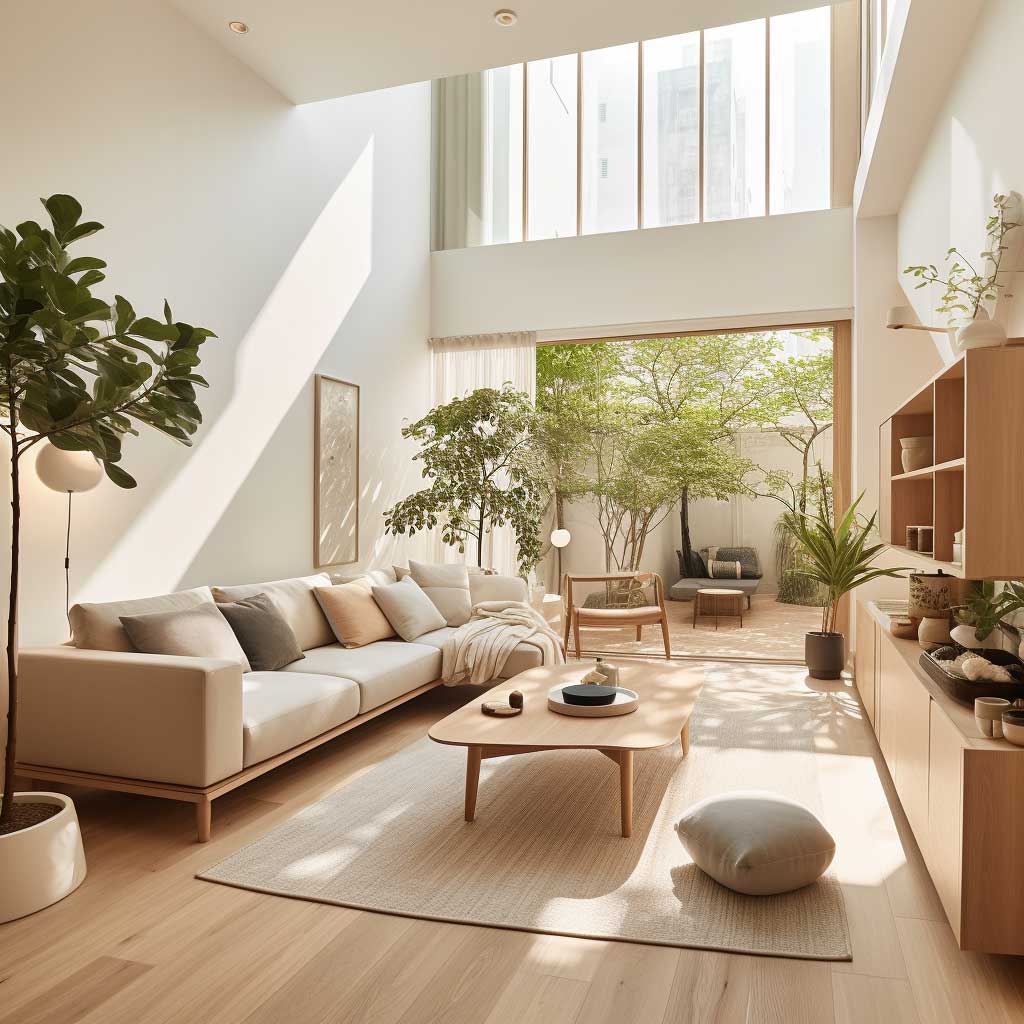
To maximize natural light in a Muji style living room, several strategies can be employed. Large windows, preferably floor-to-ceiling, are ideal. They not only allow maximum light penetration but also create a seamless connection with the outdoors, another key aspect of Muji philosophy. The use of light-colored walls and reflective surfaces can also help in distributing light throughout the room.
When it comes to furniture in a Muji style living room bathed in natural light, simplicity and functionality are key. Wooden furniture, with its natural hues and textures, complements the abundance of light. A solid oak coffee table, for instance, can add warmth and organic beauty to the space without overwhelming it.
Natural light is a vital element in creating a Muji style living room. It not only enhances the minimalist beauty of the space but also plays a significant role in the well-being of its inhabitants. By employing strategies to maximize light and choosing furniture that complements this design ethos, one can create a living room that is both aesthetically pleasing and psychologically beneficial.
Eco-Friendly Materials in Muji Inspired Interiors

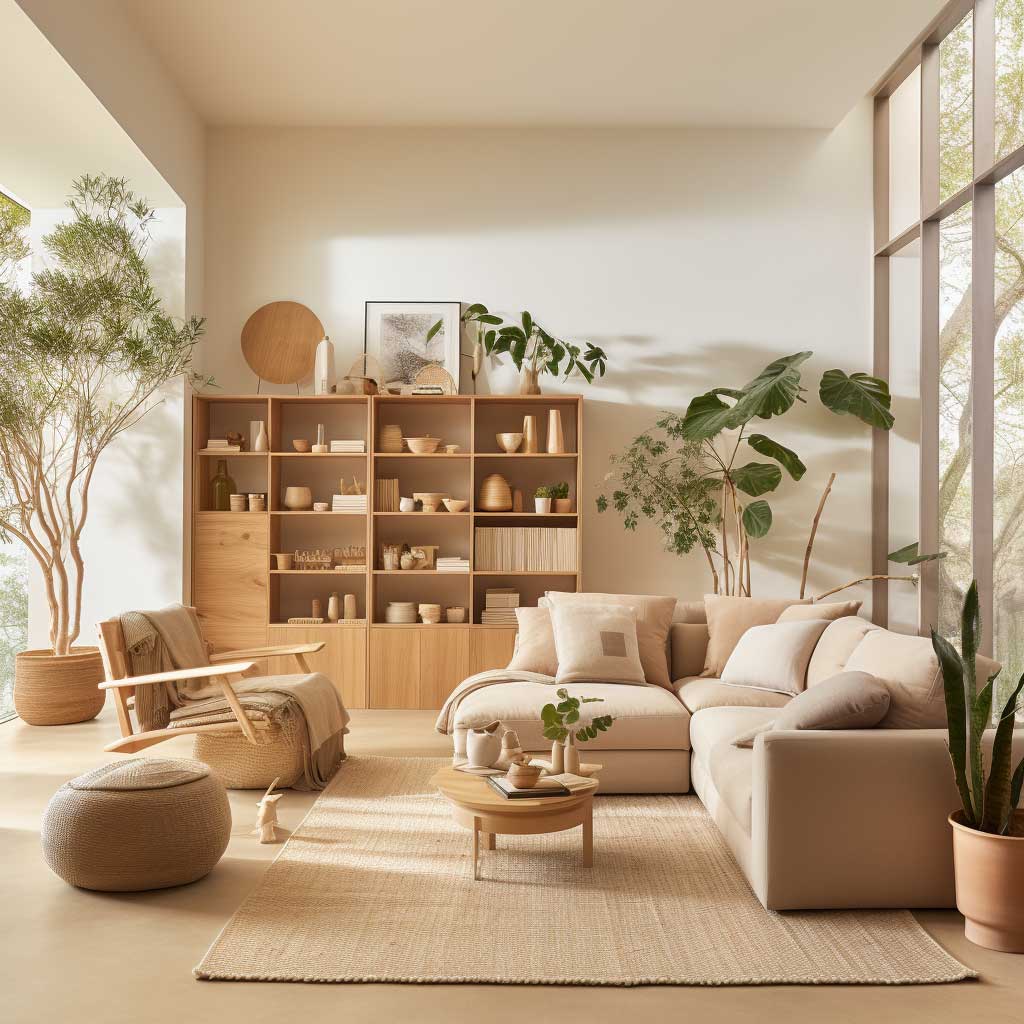


Adopting eco-friendly materials is a cornerstone of the Muji design philosophy, which is deeply rooted in sustainability and environmental consciousness. A Muji style living room, therefore, is not just a testament to minimalist aesthetics but also a reflection of a lifestyle that respects and harmonizes with nature.
The concept of sustainability in interior design goes beyond mere trends; it’s about making conscious choices that reduce environmental impact. In a Muji style living room, this translates to the use of materials that are renewable, recyclable, and have a low environmental footprint. This approach aligns with the global shift towards more sustainable living practices.
Eco-friendly materials such as bamboo, organic cotton, and reclaimed wood are popular choices in Muji style interiors. These materials are not only sustainable but also add a touch of natural beauty and warmth to the living room. For example, bamboo, with its durability and aesthetic appeal, can be used for flooring or furniture, complementing the minimalist look of the room.
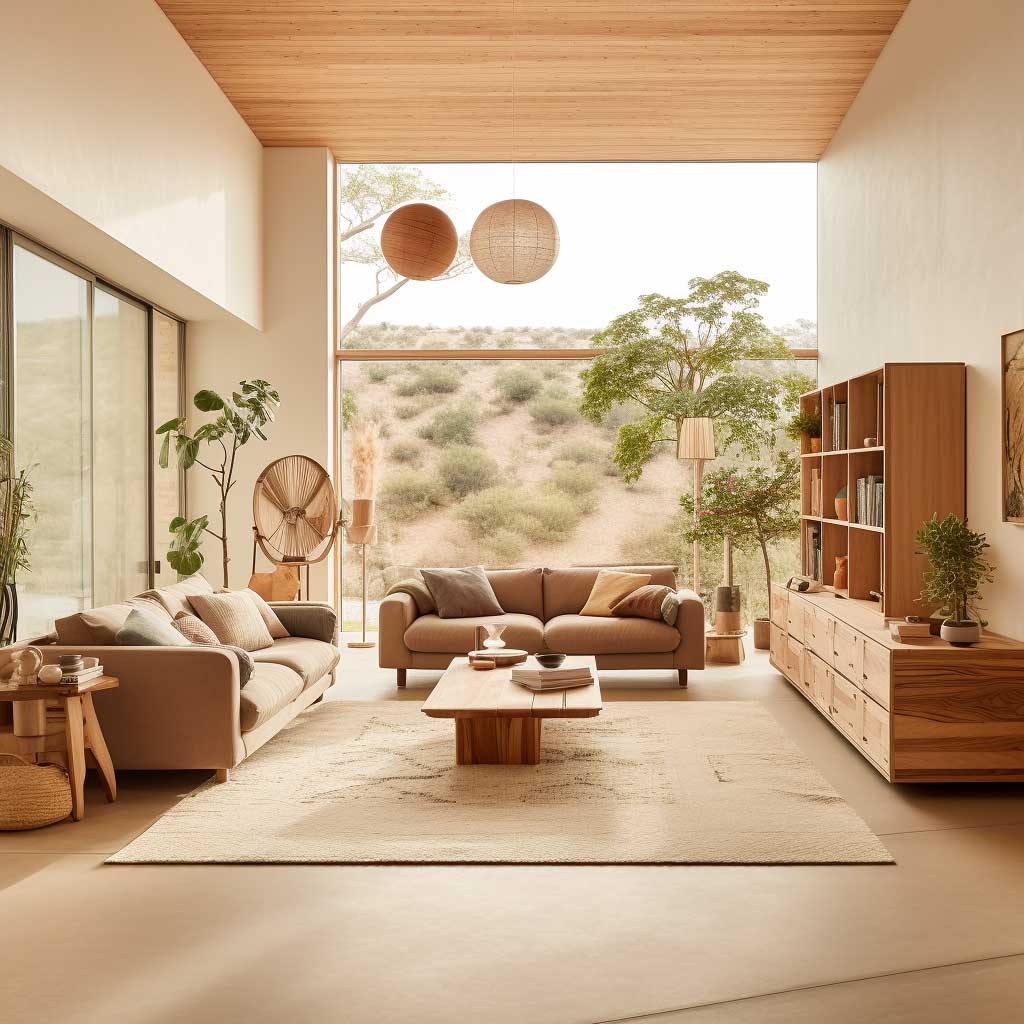

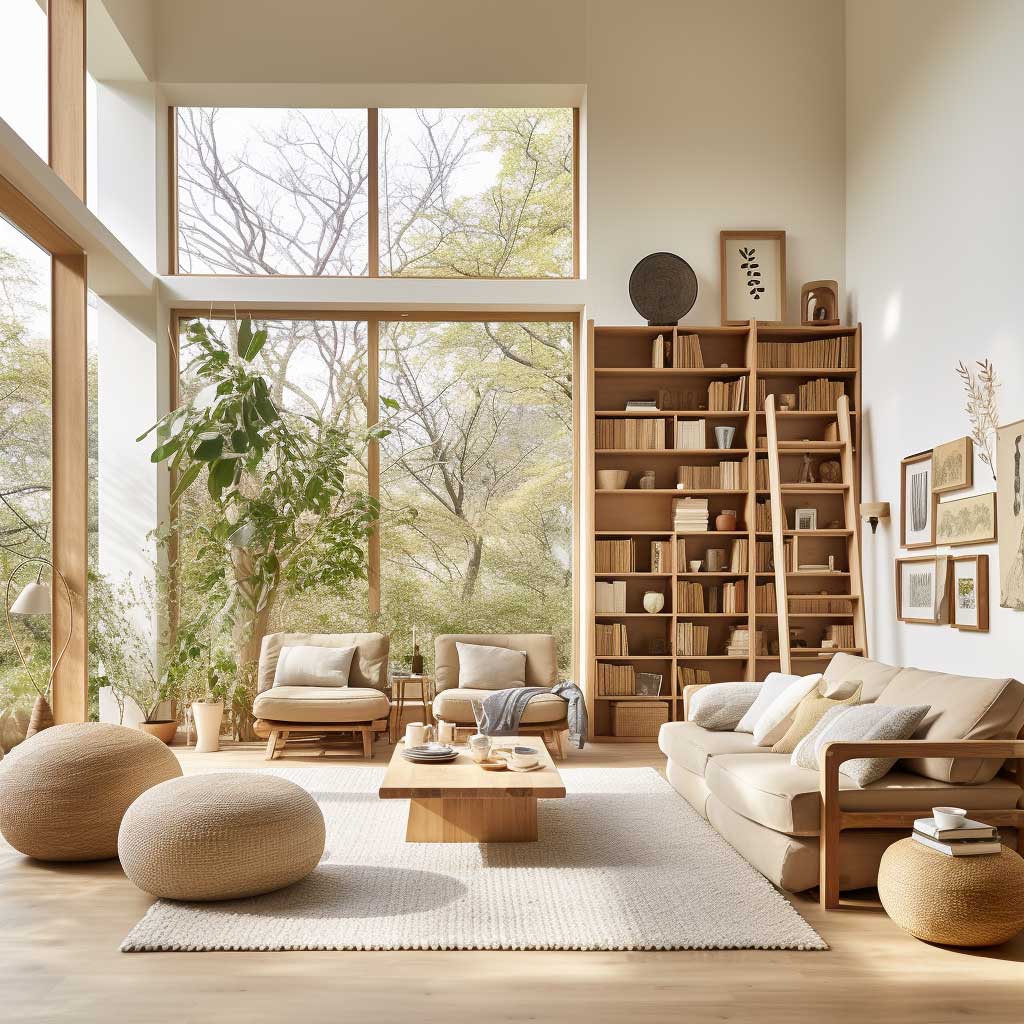
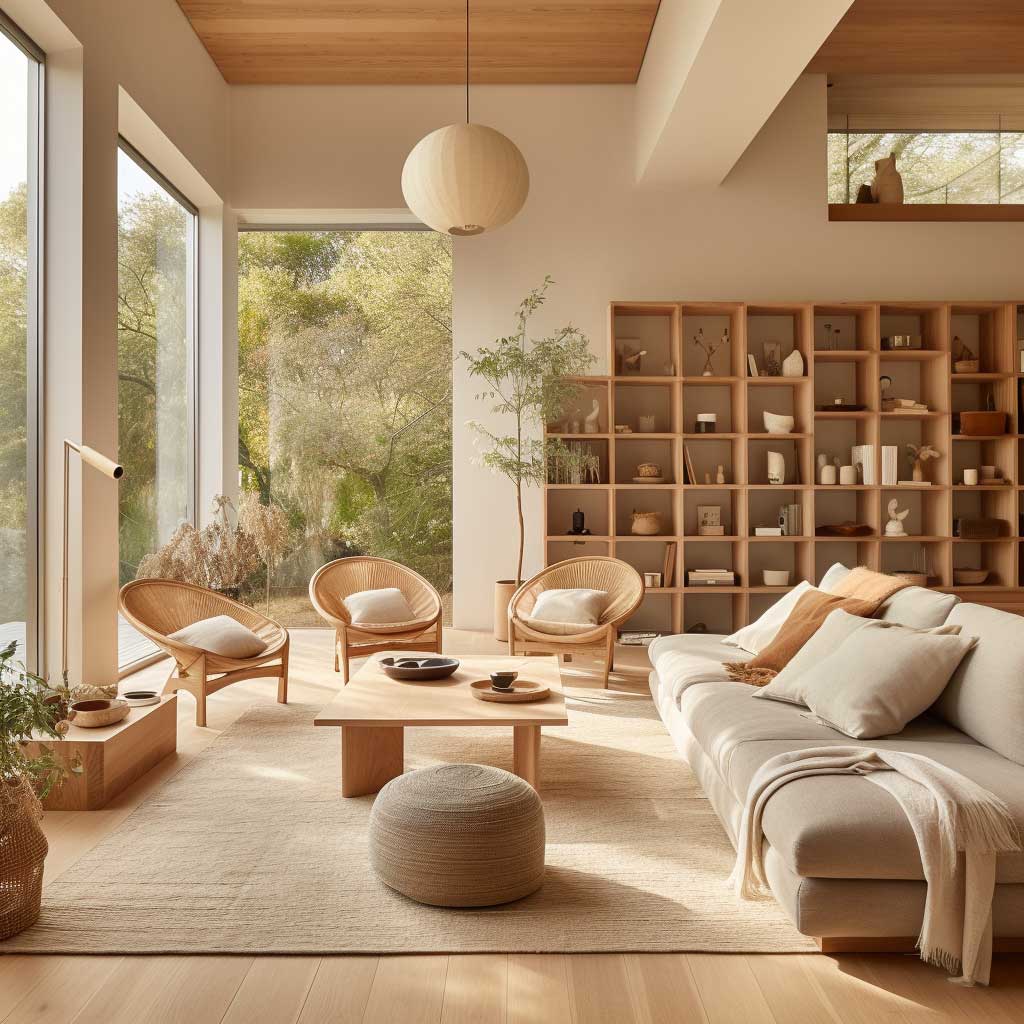
When selecting furniture for a Muji style living room, it’s important to consider pieces that embody both functionality and environmental responsibility. A handcrafted wooden side table from sustainable sources can be a perfect addition. Such furniture not only serves a practical purpose but also adds to the room’s overall serene and earthy ambiance.
In addition to eco-friendly materials, integrating natural elements like plants can enhance the Muji living room’s connection to nature. Indoor plants not only purify the air but also add a vibrant touch to the minimalist decor. They complement the natural materials used in the room, creating a cohesive and tranquil environment.
Incorporating eco-friendly materials in a Muji style living room is a step towards sustainable living. It not only aligns with the minimalist and natural aesthetics of Muji design but also reflects a deeper commitment to environmental stewardship. By choosing sustainable materials and integrating natural elements, one can create a living space that is not only visually appealing but also ethically and environmentally responsible.
Simplicity and Serenity in Muji Living Room Decor
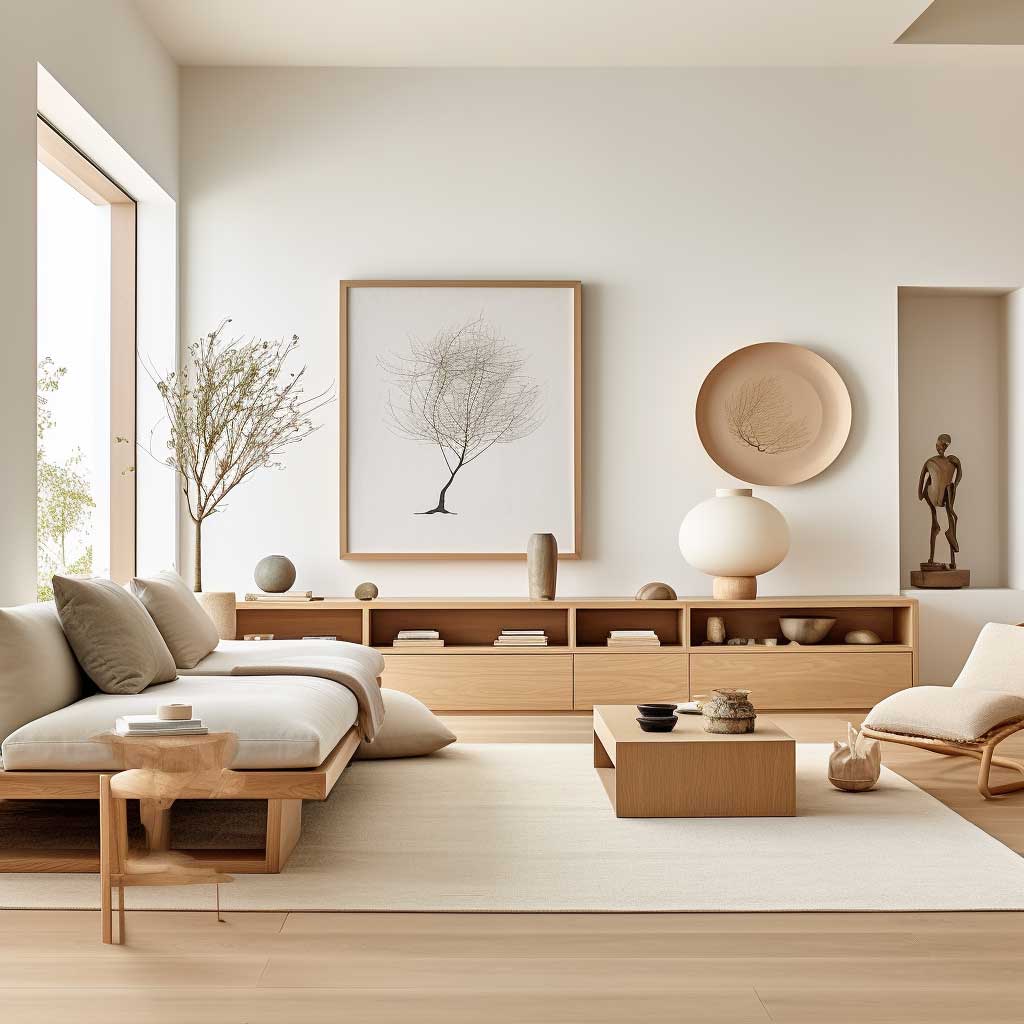

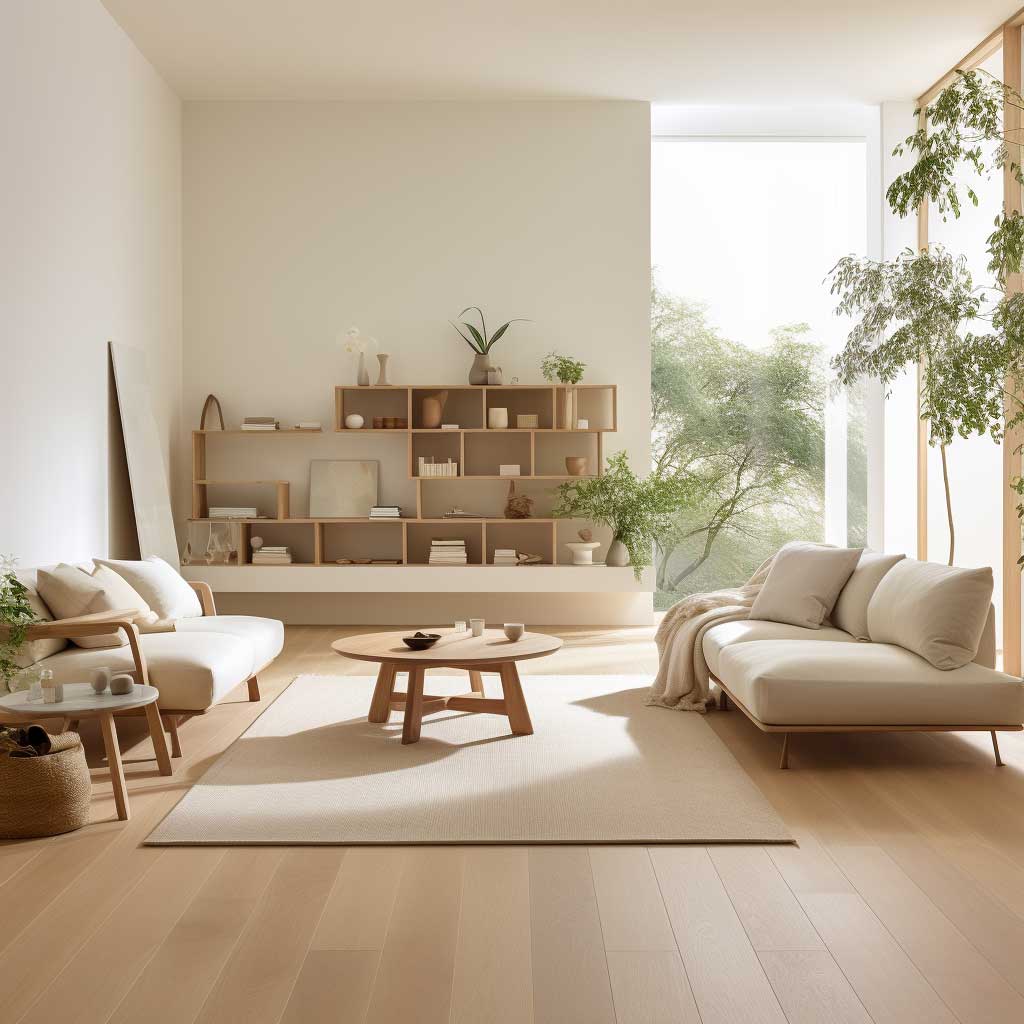
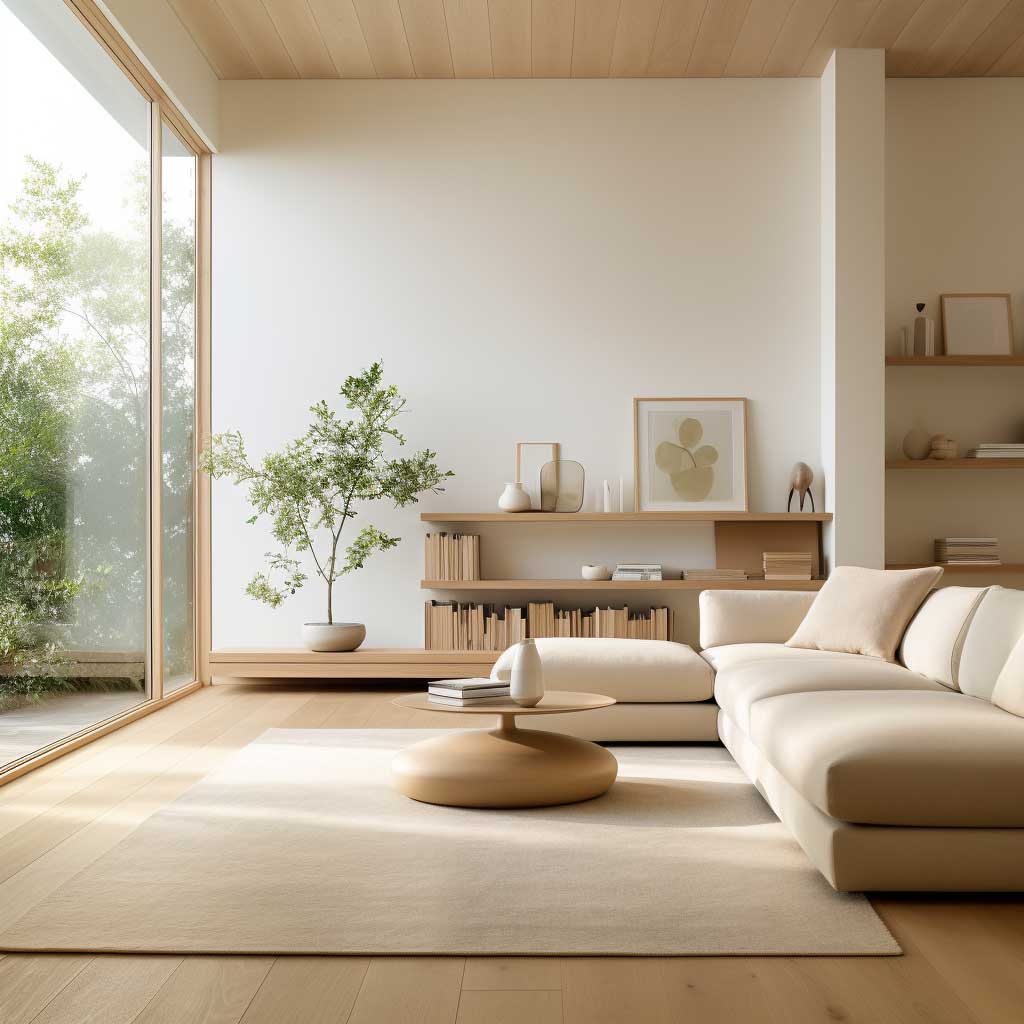
The essence of Muji style living room decor lies in its pursuit of simplicity and serenity. This design philosophy, deeply rooted in Japanese aesthetics, emphasizes clean lines, uncluttered spaces, and a muted color palette, creating a tranquil sanctuary in the heart of the home.
Minimalism is more than just an aesthetic choice in Muji living room decor; it’s a way of life that prioritizes functionality and eliminates excess. This principle is reflected in every aspect of the design, from the layout to the choice of furnishings. The goal is to create a space that feels open, peaceful, and free of distractions.
A muted color palette is a hallmark of Muji style living rooms. Soft neutrals, such as whites, beiges, and greys, dominate these spaces, evoking a sense of calm and spaciousness. Textures play a subtle but vital role, adding depth and interest to the room. Natural materials like linen, wool, and wood are preferred for their organic feel and timeless appeal.




Functionality is key in a Muji living room. Every piece of furniture is chosen for its practicality and comfort. For instance, a comfortable yet stylish sofa can serve as the centerpiece of the room, providing a cozy spot for relaxation while maintaining the minimalist aesthetic.
Lighting in a Muji living room is another crucial element. Soft, ambient lighting is preferred over harsh, direct light sources. Lamps with natural textures, like paper or wood, can cast a warm, inviting glow, enhancing the room’s serene atmosphere.
Creating simplicity and serenity in a Muji style living room involves more than just minimalist design; it’s about crafting a space that resonates with tranquility and mindfulness. Through careful selection of colors, materials, and furniture, one can create a living room that is not only aesthetically pleasing but also a haven of peace and relaxation.
In conclusion, Muji style living rooms offer a unique blend of simplicity, elegance, and comfort. This design philosophy, deeply rooted in Japanese aesthetics, is about more than just minimalism; it’s about creating spaces that promote tranquility and mindfulness. By adopting Muji style elements in your living room, you can transform your home into a peaceful haven that encourages relaxation and introspection.










